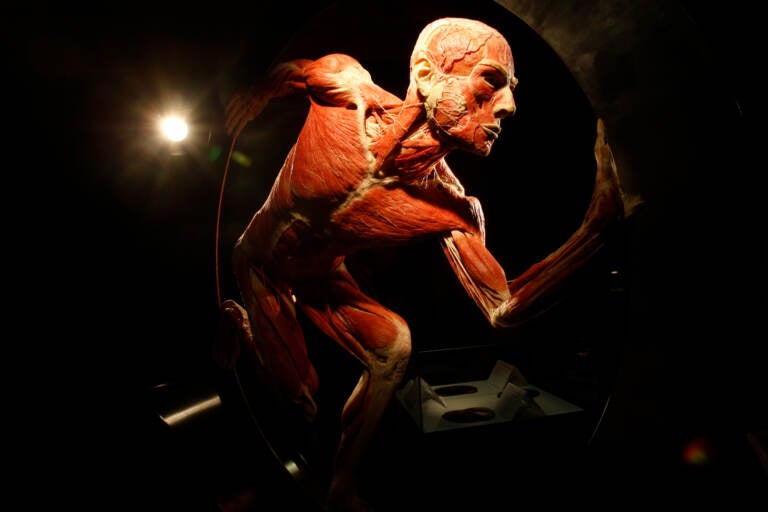Bodies for Science
Listen 48:25
One of the anatomical specimens on display at a 2008 Body Worlds exhibition in England. Body Worlds uses a process called plastination to preserve donated human and animal bodies. (AP Photo/Jon Super).
If you’re training to become a physician, your first patient is usually dead. In fact, “first patient” is what med students call the human cadavers that they work on in anatomy class — when they first learn to make careful incisions, and lay eyes on the beautiful intricacies of bone, muscle, blood vessels, and organs that make our bodies work.
Human cadavers have long played a crucial role in medicine and science. They not only teach generations of doctors about the human body — they allow researchers to learn valuable lessons about everything from the causes of rare diseases to the effects of how we live our lives. But how do bodies end up on dissection tables in the first place? What can they still teach us? And why do people choose to donate their remains?
On this episode, we explore bodies donated to science — how they’re used, why they’re so important, and why people make this choice for their remains. We hear stories about one woman’s mission to recruit future medical cadavers, and how 19th century medical schools got involved in body snatching. We’ll take a closer look at a program that connects med students to the families of their “first patients,” and find out why one firefighter has opted for a future in the Body Worlds exhibition.
Also heard on this week’s episode:
- Across the country — and the world — medical schools are facing a shortage of cadavers, a situation that has been worsened by the pandemic. Reporter Grant Hill explores the rules that govern donations, and one woman’s mission to recruit future donors.
- Reporter Elana Gordon dug into the history of medical schools and body snatching, through the tale of “One-Eyed Joe” a legendary 19th-century horse thief whose brain went missing after his body was autopsied in prison.
- We chat with Ernest Talarico, a researcher and anatomy professor at Purdue University Northwest in Hammond, Indiana, about what cadavers can teach us about rare conditions.
Segments from this episode
WHYY is your source for fact-based, in-depth journalism and information. As a nonprofit organization, we rely on financial support from readers like you. Please give today.






